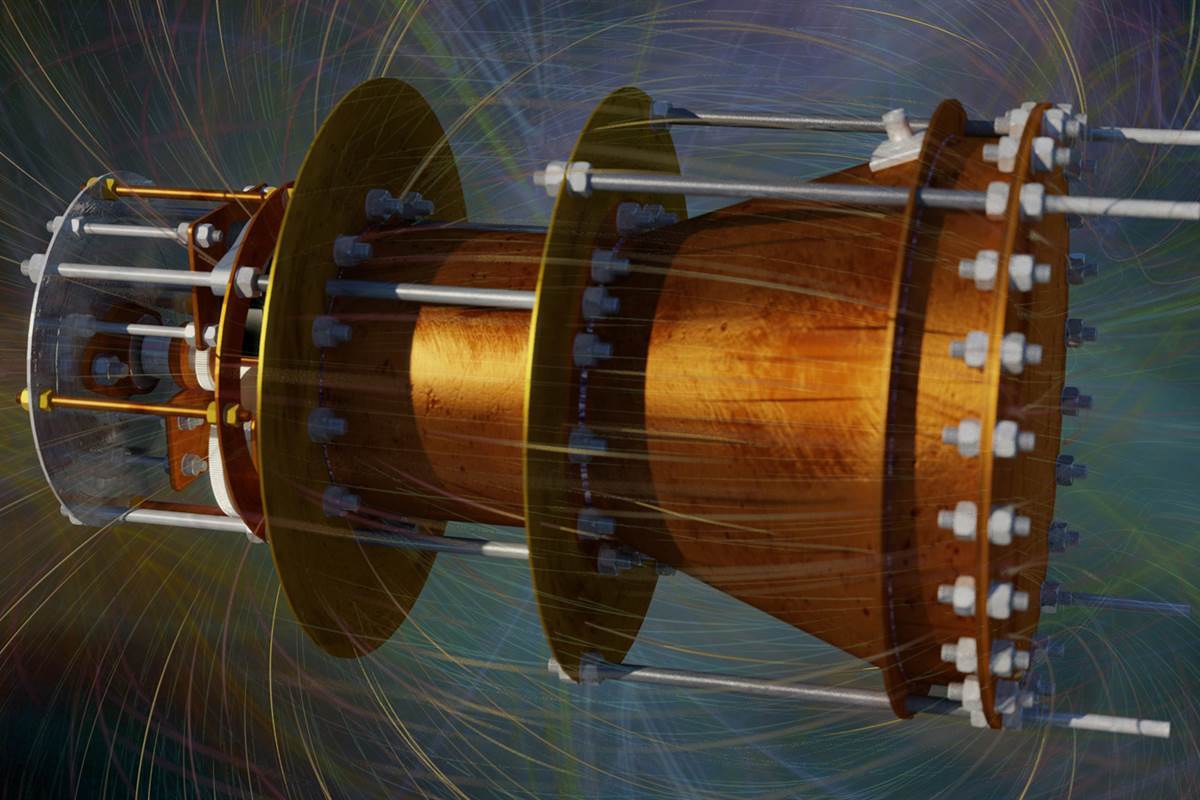
When NASA one day sends humans to Mars, the journey could take six to nine months each way. But there’s a highly-experimental device being developed that could help get us there in less than half that time — if it really works.
A small lab at NASA is creating a motor to propel ships through space much faster than today’s conventional rockets can. Decades from now, a trip to Mars might take mere weeks, without burning any fuel. The only problem? The motor seems to violate the laws of physics.
Related: The Search for Alien Life Gets Help From Powerful New Tools
To power a spacecraft, a propellant is ejected out of the rocket’s end, because you can’t accelerate forward without pushing back against something. But NASA’s alternative gadget, called an EM drive, would generate thrust without the need to belch exhaust. And dropping the weight from fuel could make ships much lighter and space travel more efficient.
“You don’t have to lug along some vast amount of stuff that you expel out of the tailpipe…all you have to do is put in energy,” says Jim Woodward, emeritus professor of history and adjunct professor of physics at California State University, Fullerton. “You can get around space-time quickly for a lot less money.”
British engineer Roger Shawyer first demonstrated the EM drive in 2003. His idea centers around the device’s copper cone-shaped chamber. When microwaves are fired into this cone, they bounce around and, somehow, generate thrust to make it move. EM drive supporters have offered various explanations for how it might obey the laws of nature, including that it’s somehow interacting with the gravitational field that surrounds everything in the universe.
Over the years, a few groups have tried to show how an EM drive could really work. A team in China claims to be testing one now and Pennsylvania-based Cannae Inc. aims to launch a similar device on a shoebox-sized satellite later this year.
However, the vast majority of physicists remain decidedly unconvinced.
“There is no really agreed-upon, viable theory,” says Dennis Bushnell, chief scientist at NASA’s Langley Research Center in Hampton, Va. “I wish it was real, it’s just not proven to be real yet.”
Related: Earth-Sized Telescope May Let Us See Black Hole For First Time
A few months ago, scientists at NASA’s Eagleworks lab in Houston, which investigates new and speculative ways of propelling spacecraft, reported that thrust from their EM drive prototype pushed a pendulum ever so slightly. However, this doesn’t put the EM drive debate to rest. The amount of thrust NASA’s device generates is minuscule, and it’s not clear yet whether it was caused by some error in the experiment.
Paul March, one of the scientists working on NASA’s prototype, says the thruster must be more efficient if it’s ever to carry humans into space. And an EM drive might be necessary for future interstellar missions since regular rockets aren’t suited for such ambitious journeys.
“You can get around space-time quickly for a lot less money.”
“You just couldn’t have a big enough fuel tank,” says Heidi Fearn, a physicist at California State University, Fullerton who working with Woodward to develop another type of thruster that would not need a propellant. “This is giving us a new possibility of…going beyond our solar system.”
EM drives could also make space travel safer: The radiation and microgravity of deep space wreak havoc on human bodies, the less time spent in transit the better. And these devices would lay the groundwork for technologies that could one day take us even farther, like warp drives and traversable wormholes that create shortcuts for faster-than-light travel, says March, who recently retired from NASA to become an independent researcher in Friendswood, Texas.
But warp drives are still a very long way off, and until the EM drive is ready, we will probably use rockets like SpaceX’s Falcon Heavy to get to Mars. Still, if these experimental motors can be shown to work, they could eventually help us colonize the red planet or mine asteroids for minerals like iron and nickel.
“Chemical rockets just won’t cut it when it comes to deep space transport,” March says. “We’re at the basement floor of developing the technology required to make the Star Trek Enterprise a real ship.”
Follow NBC MACH on Twitter, Facebook, and Instagram.







